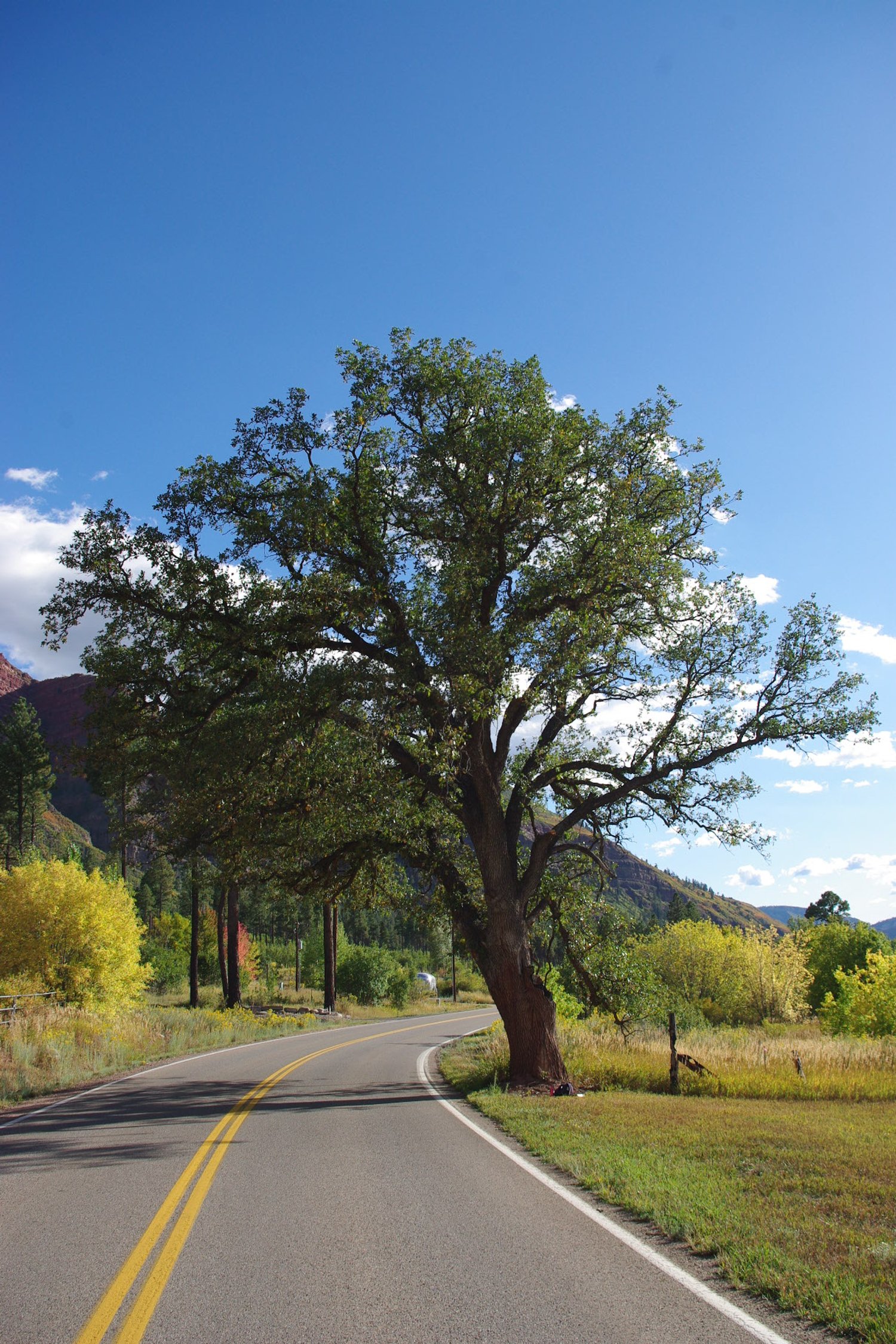Gambel oak (Quercus gambelii)
Second place champion Gambel oak near Durango on Trimble Lane.
Species info:
Leaves: Alternate, simple, oblong with 5–7 rounded lobes and deep sinuses; margins entire or shallowly notched. Upper surface dark green and glossy; underside paler and softly hairy.
Leaflets: None (simple leaf).
Leaf Surface: Shiny and smooth above; pubescent and lighter below.
Bark: Gray and scaly on younger stems; becomes rough and deeply furrowed on mature trunks.
Flowers: Inconspicuous; separate male and female catkins on the same plant (monoecious).
Fruit: Acorns 0.9–1.8 cm long, short-stalked, set one-third to halfway into a rough-scaled cup.
Botanical: Quercus gambelii
Family: Fagaceae
Mature Height: Typically 10–25 feet; occasionally up to 60–70 feet in ideal conditions
Canopy Spread: Comparable to height; often forms dense thickets
Foliage Type: Deciduous
Tree Shape: Multi-stemmed shrub or small tree; sometimes single-stemmed at maturity
Growth Rate: Moderate
Fall Color: Yellow to bronze
Water Use: Low to moderate; drought-tolerant once established
Hardiness: Zones 4–8 (native at elevations 4,500–7,500 feet)
Soil Preference: Well-drained, rocky or sandy soils; thrives in dry mesa and foothill environments
Wildlife Value: High — acorns are an important food source for birds, squirrels, deer, and bears; thickets provide cover for wildlife
Pests/Pathogens: Generally resistant; may experience oak leaf blister or powdery mildew under humid conditions
Planting Recommendations: This Colorado native is recommended for most areas.
Information Sources:
Front Range Tree Recommendation List


